England’s Stonehenge has been sitting high and dry on Salisbury Plain since around 3100 BC where it can be easily visited and studied. Although Stonehenge gets all the attention, we know that there are other megalithic structures all over Europe that have not been thoroughly studied. One of those is the Spanish Stonehenge.
Like England’s Stonehenge, the Spanish Stonehenge consists of large stones that have been carefully placed on end to form a circle. The Spanish Stonehenge, however, has spent much of its recent history underwater. But an ongoing drought in Spain has allowed this mysterious prehistoric site to reappear once again.
Spain’s Drought Conditions
In the last few years, Spain has experienced severe drought conditions … the worst in this country in several decades. Meteorologists attribute the drought to record-high temperatures in 2022 and continued heat waves in 2023, as well as lower than average rainfall amounts.

The drought has left the country the driest it has been in 1,200 years and has caused water levels to drop significantly in many areas. One of those is the Valdecanas Reservoir in the Tagus River. As devastating as the drought is, there is one silver lining … it has allowed the Spanish Stonehenge to reemerge.
The Role of Francisco Franco, Spanish Dictator
Between 1939 to 1975, Spanish military officer Francisco Franco served as the leader of Spain. A dictator, Franco enacted authoritarian policies and ruled with an iron fist. His people were censored and repressed. Freedoms and rights were taken away.

Under Francisco Franco, Spain enjoyed economic stability. Franco guided his country into the modern era and espoused a strong sense of nationalism. The positive aspects of Franco’s time in power came at a price … the freedom of the Spanish people.
Why Was the Dolmen of Guadalperal Submerged?
During Francisco Franco’s tenure in office, he implemented a program of infrastructure and public works programs that became known as the “Desarrollo,” or the “Development”. Franco’s plan was to bring Spain up to the same level of modernization as other European nations.
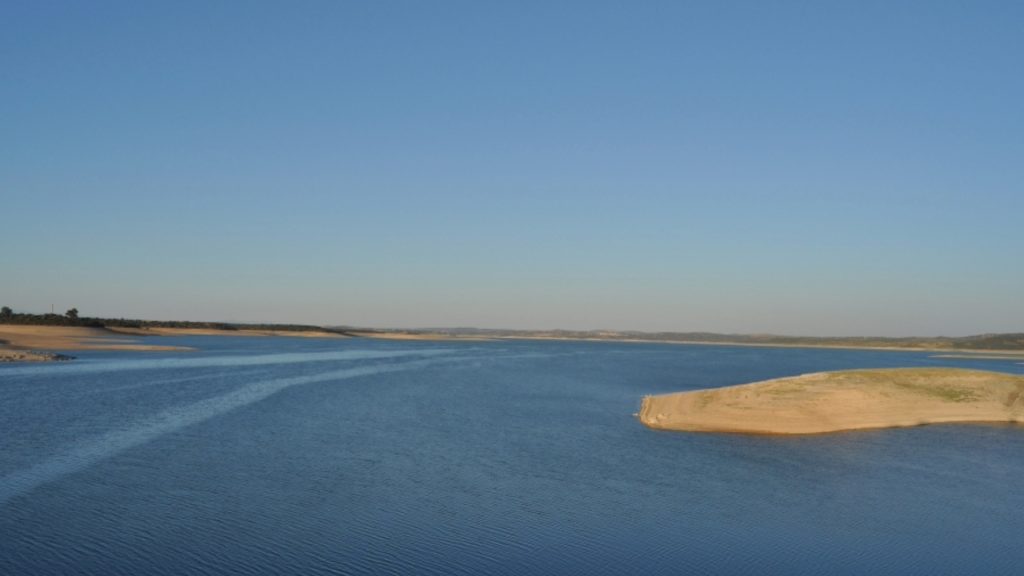
He commissioned the construction of dams, highways, bridges, and industrial complexes. One of these was the Valdecanas Dam. While these projects accomplished the goal Franco set by spurring economic growth and improving the country’s infrastructure, they were also criticized for destroying culturally significant sites.
The Valdecanas Reservoir
An artificial reservoir, the Valdecanas Reservoir was created when the Valdecanas Dam on the Tagus River was built in 1963. The dam was built to control the water flow on the river, ensuring that water was available for irrigation. The dam also generates electricity via a hydroelectric power plant.
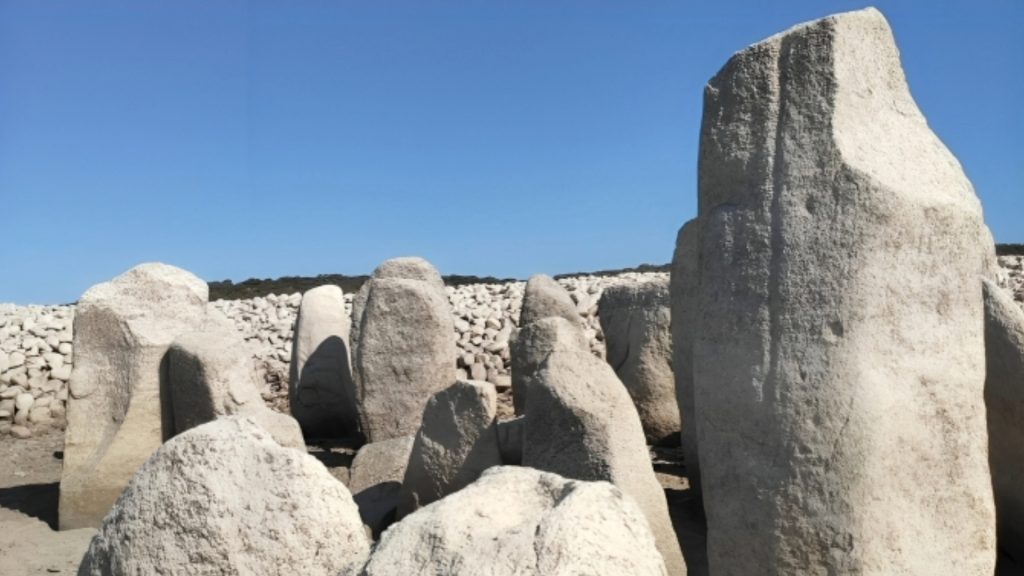
The water has damaged the ancient stones. The carvings and engravings have been nearly erased by erosion. In the 1920s, Georg and Vera Leisner, archaeologists from Germany, recorded the engravings in a series of drawings.
The Destruction of Ancient Sites
However, when the river was dammed and the Valdecanas Reservoir formed, the prehistoric stone megalith site, the Spanish Stonehenge, officially called the Dolmen of Guadalperal, was flooded. Since then, the ancient stones have only been visible four times.

Along with the flooding of the Dolmen of Guadalperal, the Valdecanas Dam buried the ancient Roman city of Augustobriga.
The Initial Discovery of the Dolmen of Guadalperal
The Dolmen of Guadalperal were first discovered and identified in 1926 by Hugo Obermaier, a German archaeologist. He conducted excavations in the area in the mid-1960s. In addition to the standing stones – called dolmens, as we will see – Obermaier found a Roman coin, shards of ceramic pottery, and a grinding stone.
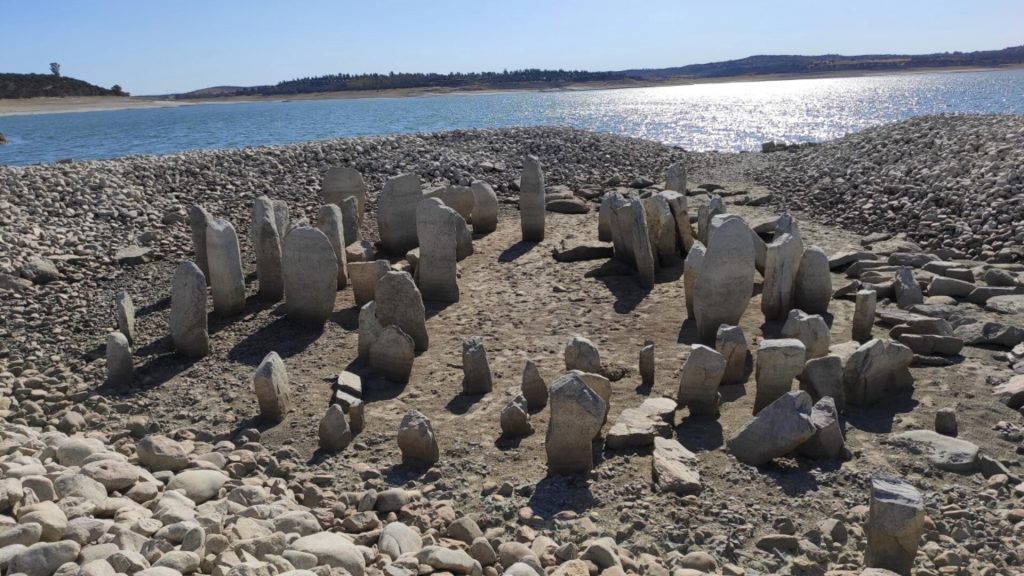
Obermaier also discovered Roman burials, axes, knives, and other tools. A small village was also found, presumably built to house the workers who built the megalithic monument. Obermaier theorized that the stone structure may have served as a solar temple.
More Stones than Stonehenge
The Dolmen of Guadalperal is made up of 150 granite stones. By comparison, Stonehenge in England has only 52 stones, although scholars believe there were originally 80 stones. Some of the stones create a chamber that is about 16-feet in diameter. Stones are also arranged to create a corridor that is 69-feet long and nearly five-feet wide.
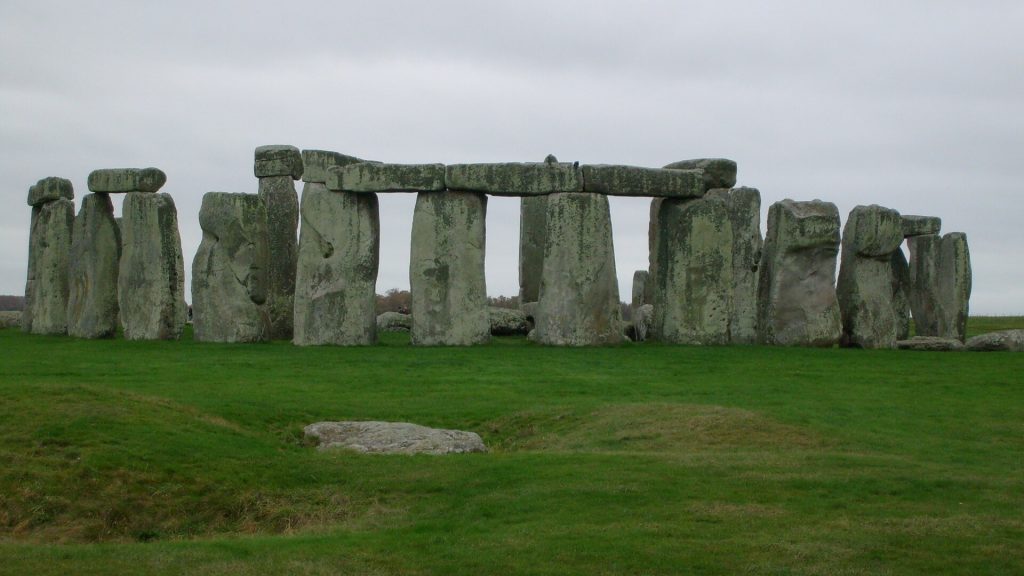
At the end of the corridor, there is a six-foot-tall carved stone called a “menhir”. The carving on this stone has been interpreted by some researchers to be a snake. Snakes were a common symbol throughout history, so this is not unusual. However, other scholars believe the wavy lines are not a snake but a symbol for water … specifically, the Tagus River.
As Old as Stonehenge
Researchers have dated England’s Stonehenge to about 3100 BC. The Dolmen of Guadalperal, however, appear to be even older. This prehistoric monument dated back to around 5000 BC. But the presence of Roman artifacts shows that it has been used by different cultures throughout history.
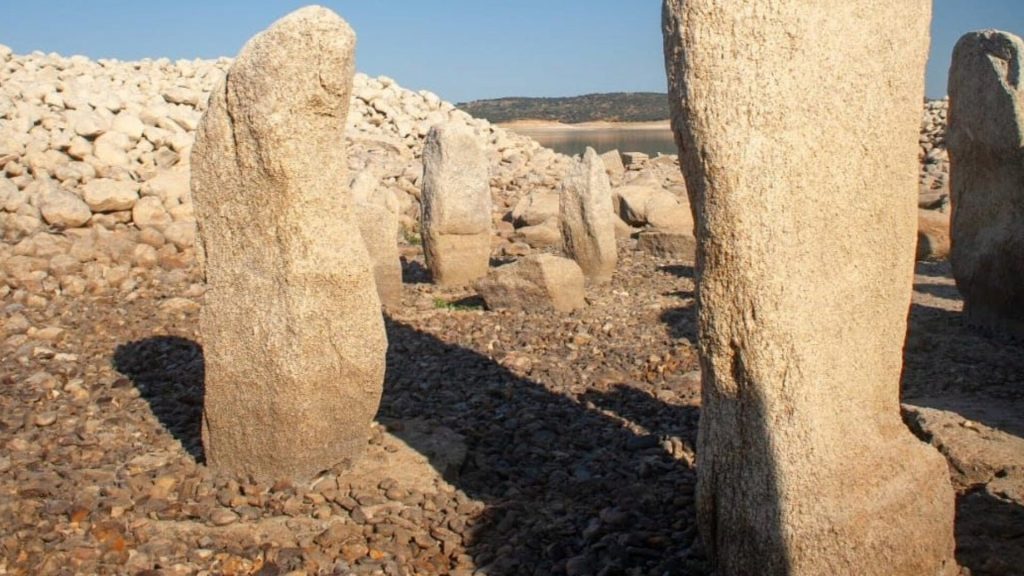
The Dolmen of Guadalperal could not have been constructed by the Romans. The Roman Empire came much later, in 27 BC. This means the Dolmen of Guadalperal predate the Roman Empire, Stonehenge, and even the Great Pyramid of Giza, which researchers believe was constructed in 2700 BC.
Spain in the Neolithic Era
If the Dolmen of Guadalperal is as old as researchers believe, it means the stone monument was constructed during the Neolithic Era. This period of human history began roughly around 7000 BC and ended about 2000 BC. During this time, humans transitioned from nomadic cultures to living in agricultural-based communities.
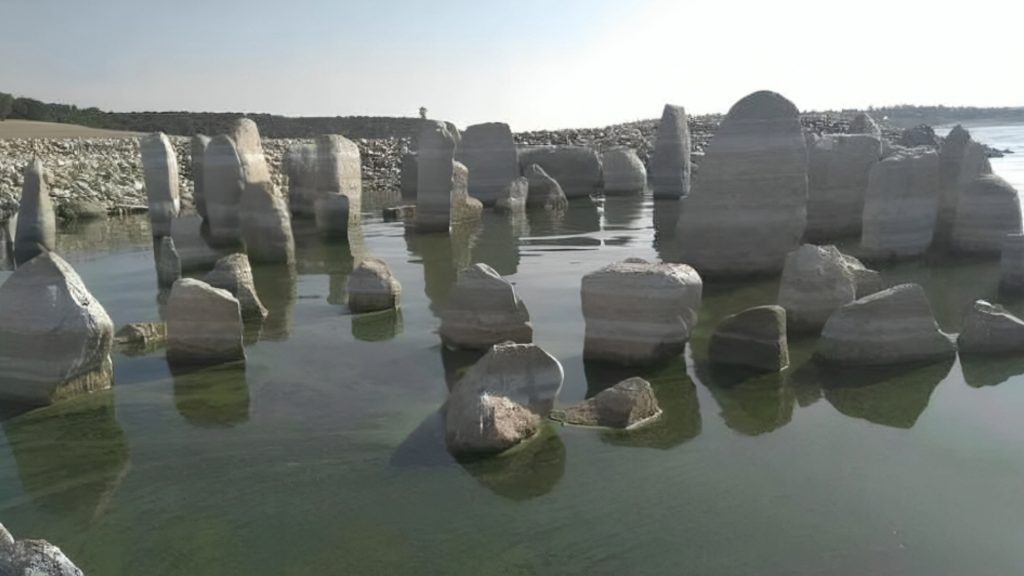
As Neolithic humans developed more complex societies, religion, art, and funerary practices emerged. This is when we see the construction of the first megalithic structures, which were a result of the worship of deities. Dolmens were among the first megaliths.
What Are Dolmens?
The term “dolmen” is used to describe ancient stones arranged in a ritualistic manner. But there is more to it than that. The exact definition can be understood by knowing that “dol” means “table” in the Breton language, while “men” means “stone.” Dolmens, therefore, as stone tables.
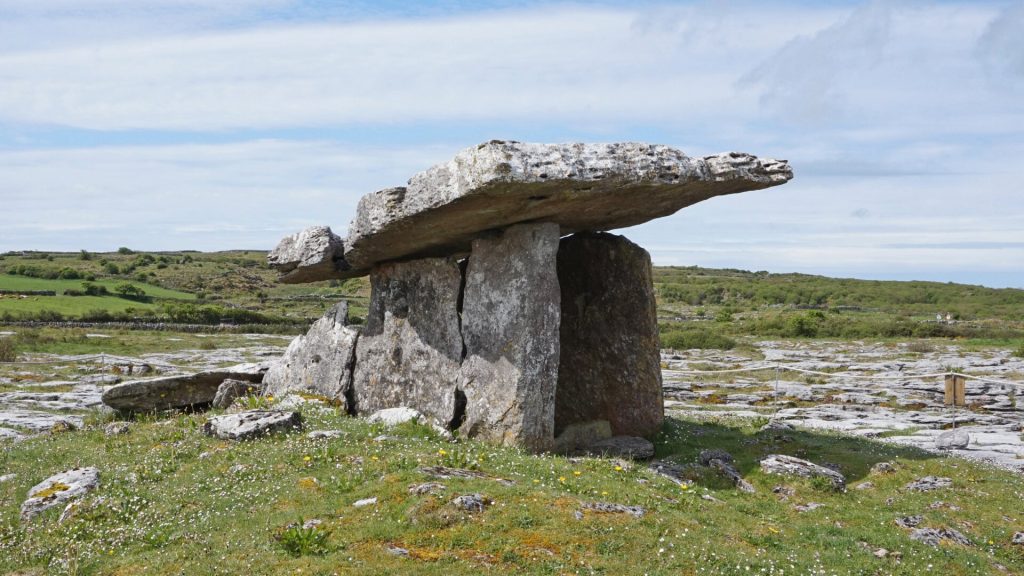
To be dolmens, the stones must be set vertically so as to support a flat stone placed over the top like a table. There are dolmens located in several places around Western Europe, however researchers have yet to definitively identify who built them and why.
Why Were Dolmens Constructed?
Some famous megalithic dolmen structures, most notably Stonehenge in England, are arranged in astronomical alignments. This has led to the theory that dolmens may have been used as giant, stone star charts to mark the movements of celestial bodies. The stones would have served as a calendar.

The other leading theory is that these sites were places of worship. Obermaier believes that the Dolmen of Guadalperal was an ancient solar temple. Certainly, there were cultures who worshiped Sun deities during the Neolithic Era. But it could also be that worshippers came to these structures centuries after they were built.
How Were Dolmens Constructed?
Many of the stones in megalithic dolmens weigh several tons. Moving and upending these heavy stones would have been a monumental task to accomplish without modern machinery. It would have required a huge workforce using whatever tools and resources were available to them.
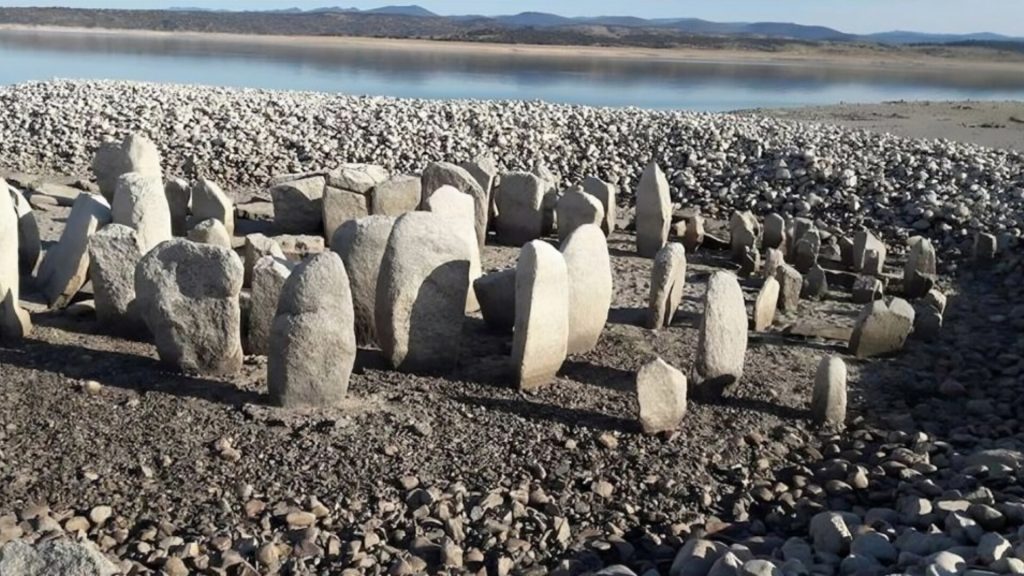
How were the Dolmen of Guadalperal constructed? Unfortunately, researchers have not been able to study the Dolmen of Guadalperal in the last fifty years so we can only speculate how these stones were moved into place. The builders may have used ropes, timbers, levers, or earthen ramps. In the case of the Dolmen of Guadalperal, the evidence has been washed away.
The Chance to Study the Dolmen of Guadalperal
The receding waters of the last few years have, to the delight of archaeologists, revealed the Dolmen of Guadalperal once again. This is a rare opportunity and one that may not last long. Therefore, archaeologists are flocking to the location to inspect the site while they can.
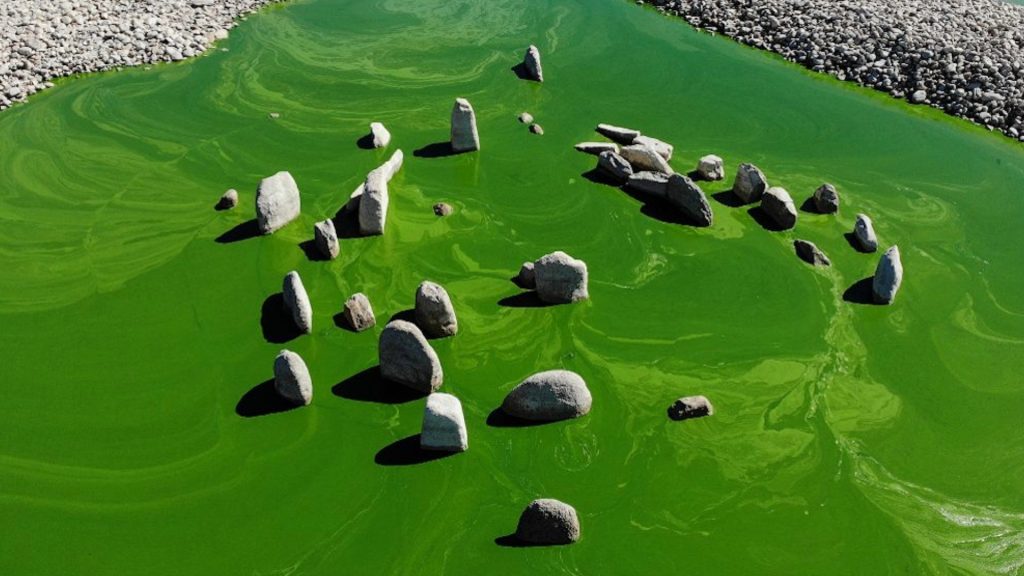
One of those archaeologists is Enrique Cedillo of Complutense University in Madrid. He explained, “It’s a surprise. It’s a rare opportunity to be able to access it.” He is not alone.
A Must-See Tourist Attraction
While the Dolmen of Guadalperal is temporarily visible, they have become a hot tourist attraction for travelers looking for a once-in-a-lifetime experience. For locals, this has been a boon for the economy.
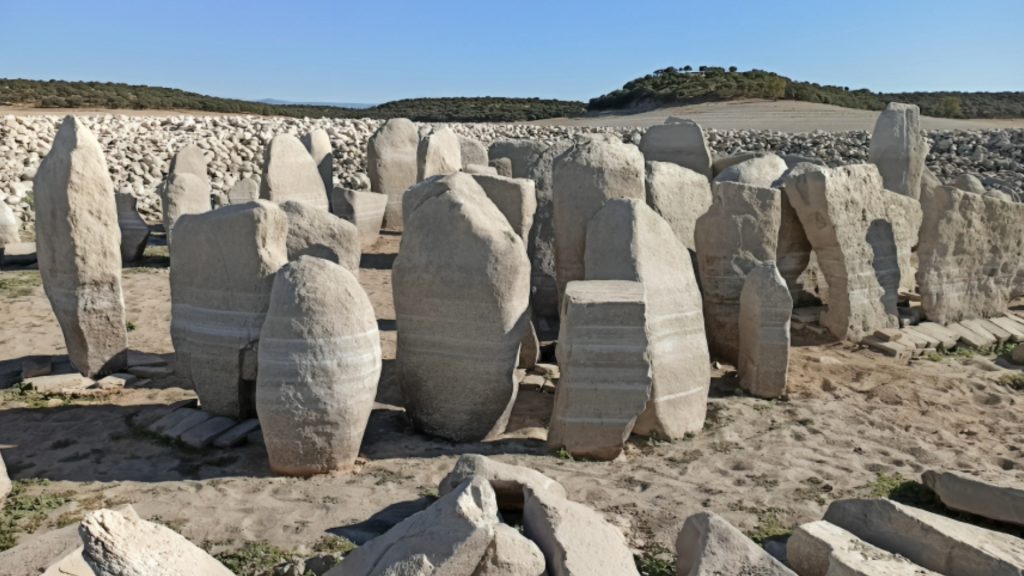
Ruben Argentas runs a small boat tour business. He stated, “The dolmen emerges and the dolmen tourism begins.” Members of the local historical society have supported the idea of relocating the Dolmen of Guadalperal’s stones to a different location or to a museum site, but for now, the Spanish Stonehenge will continue to play peekaboo in the reservoir’s water.






